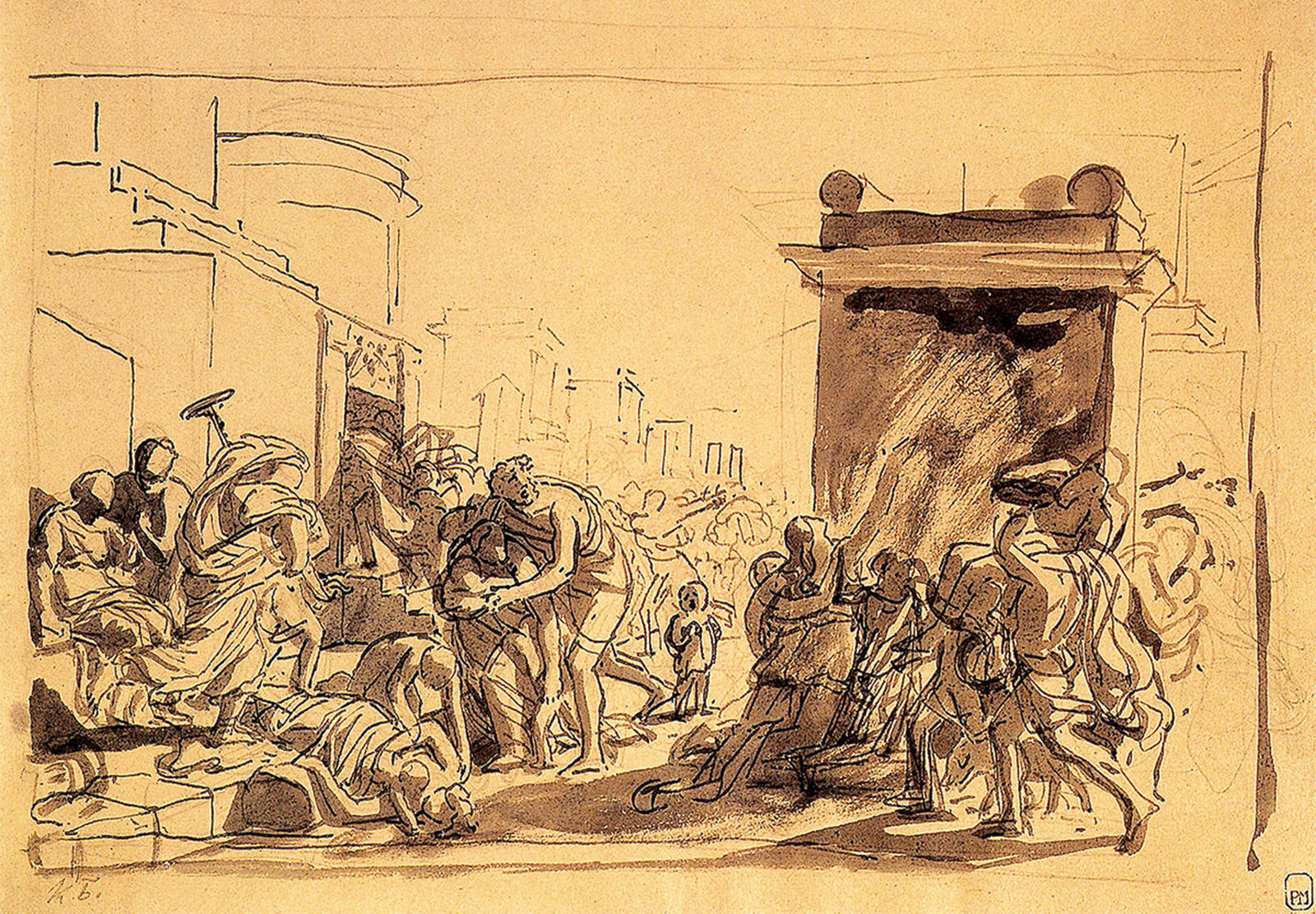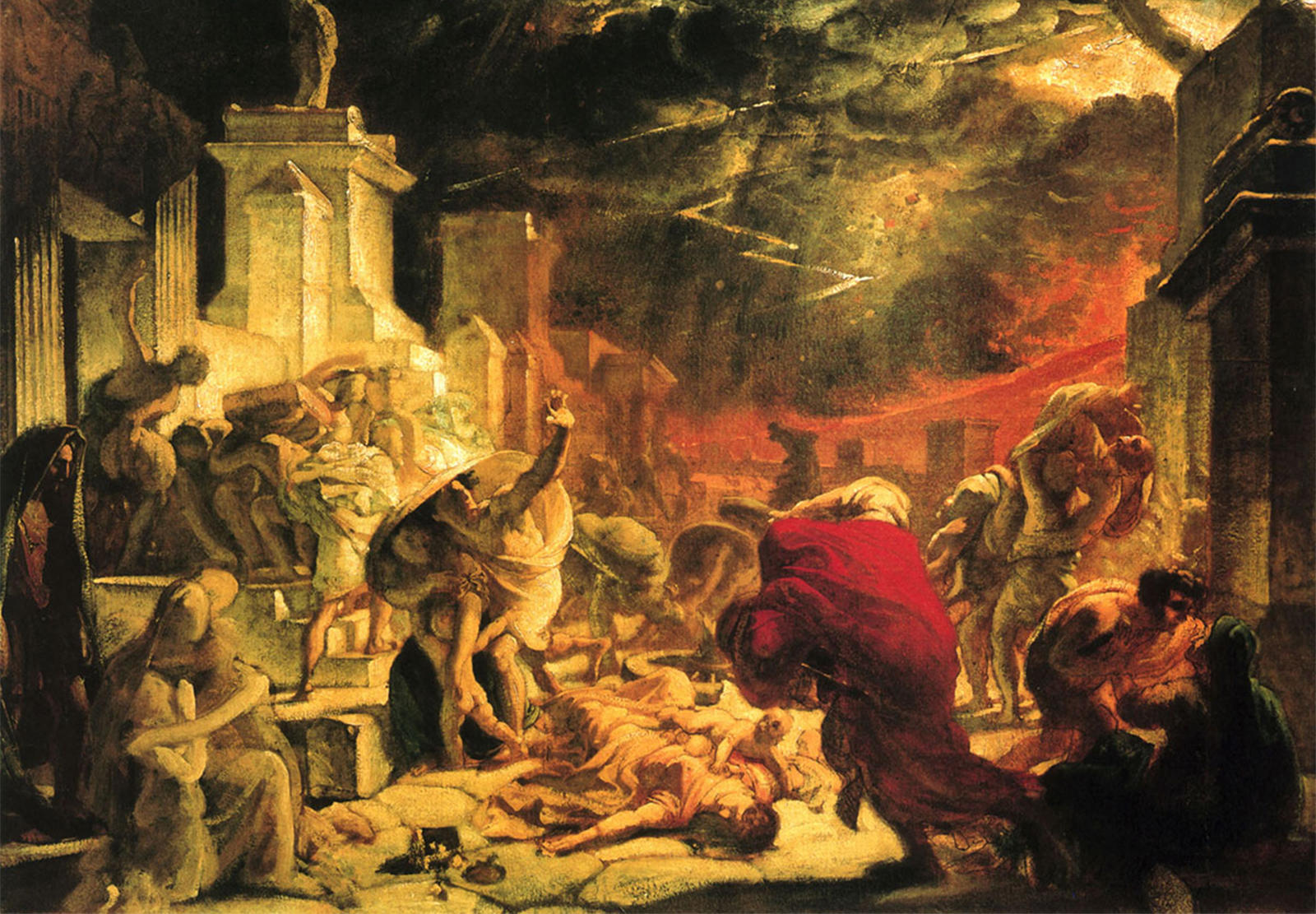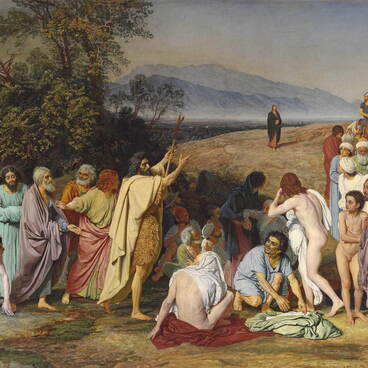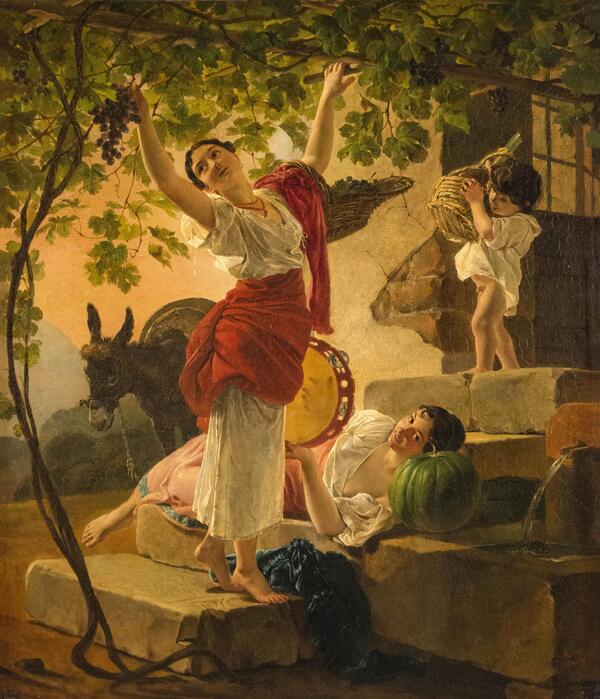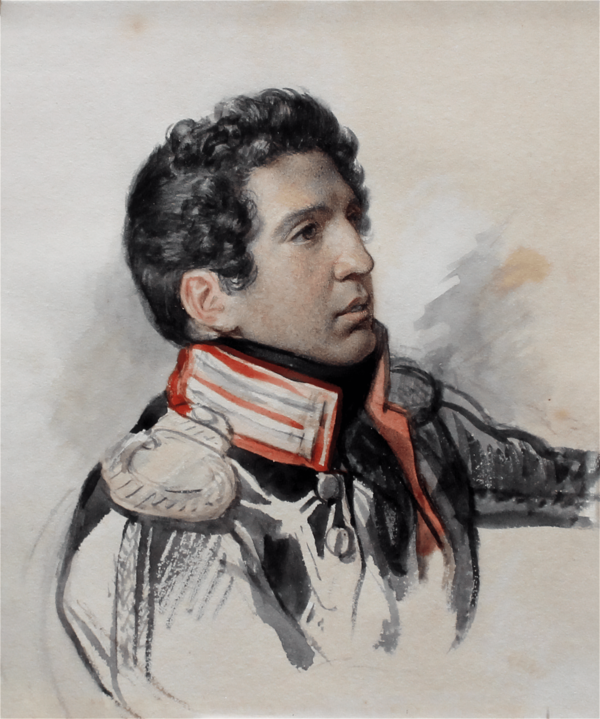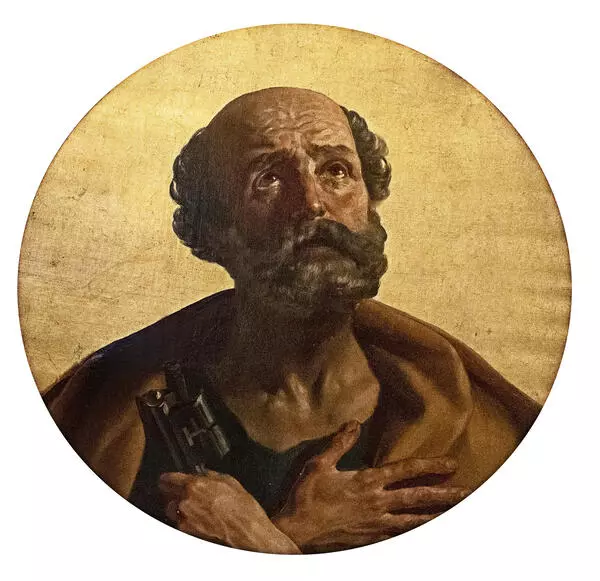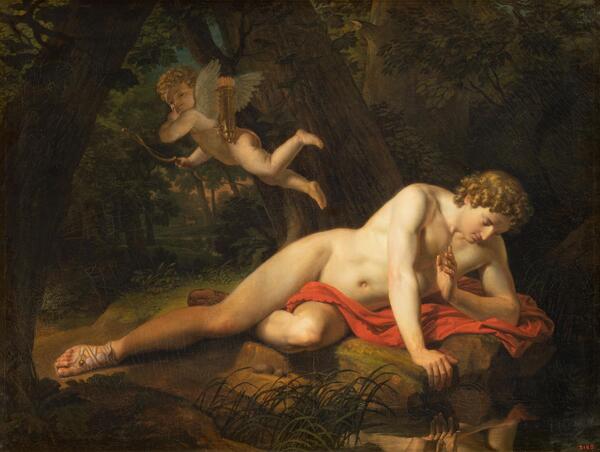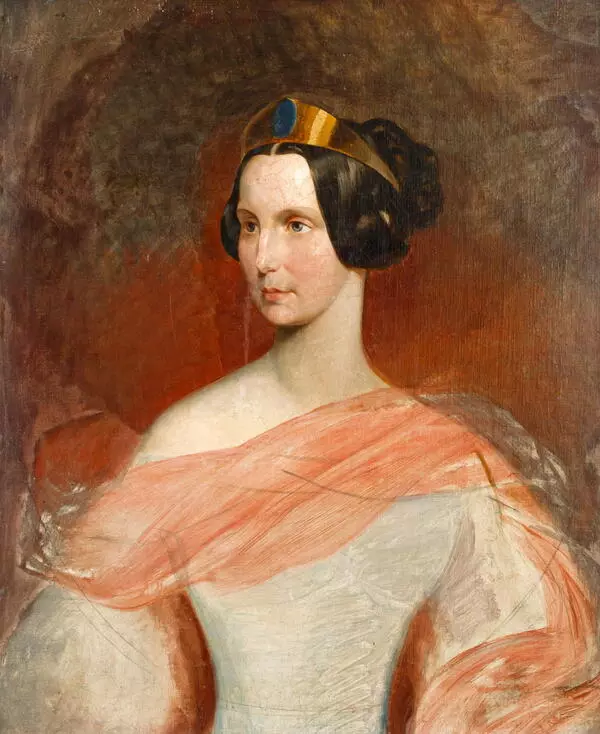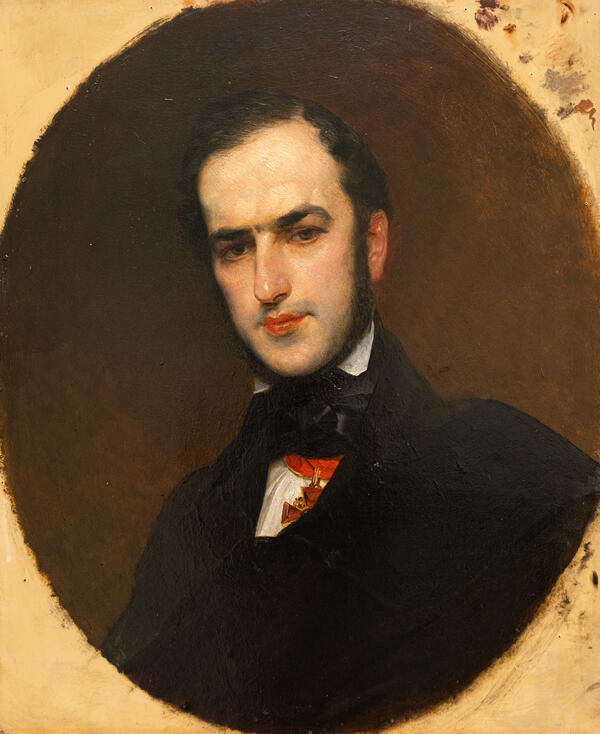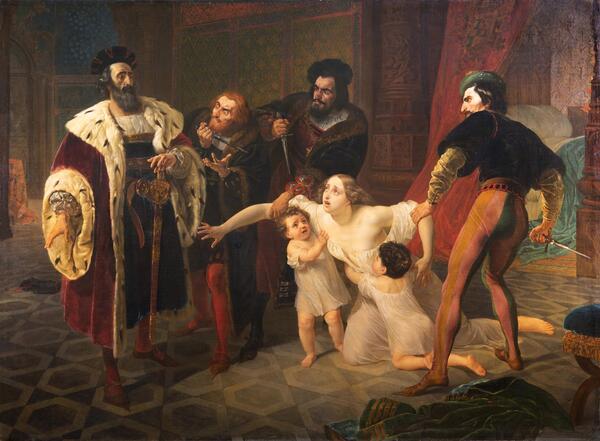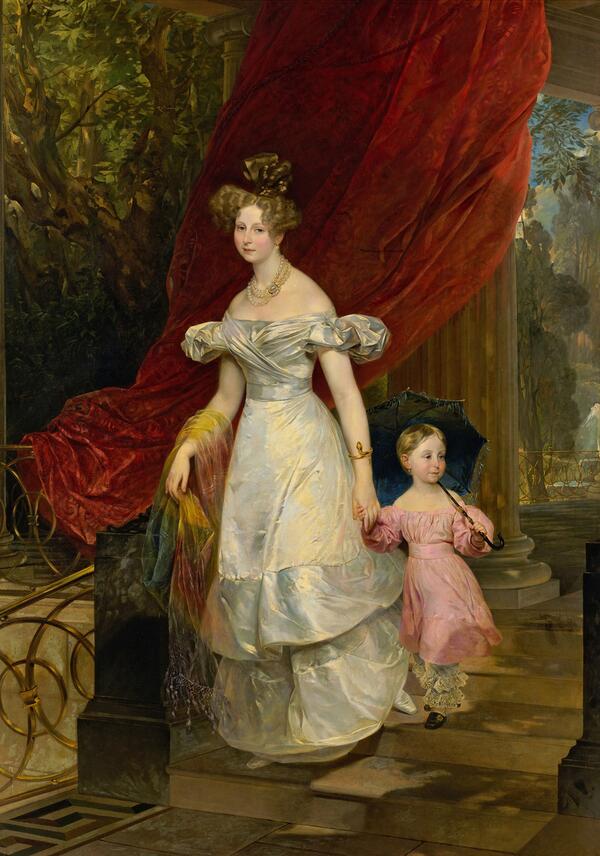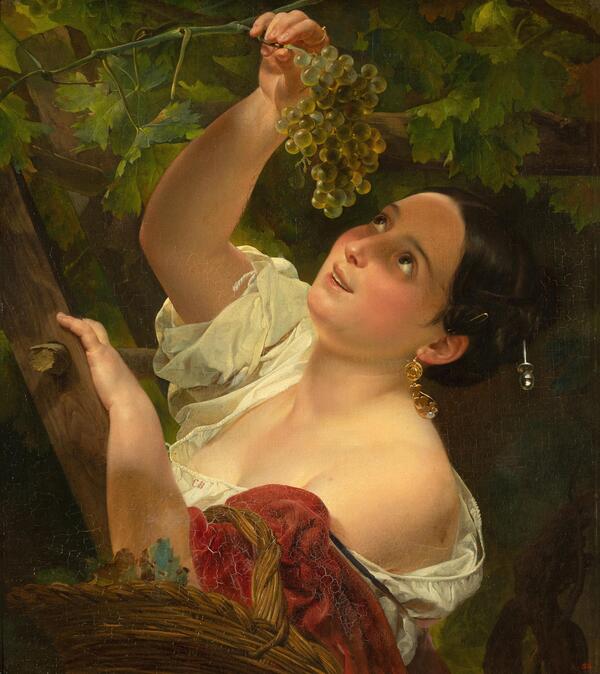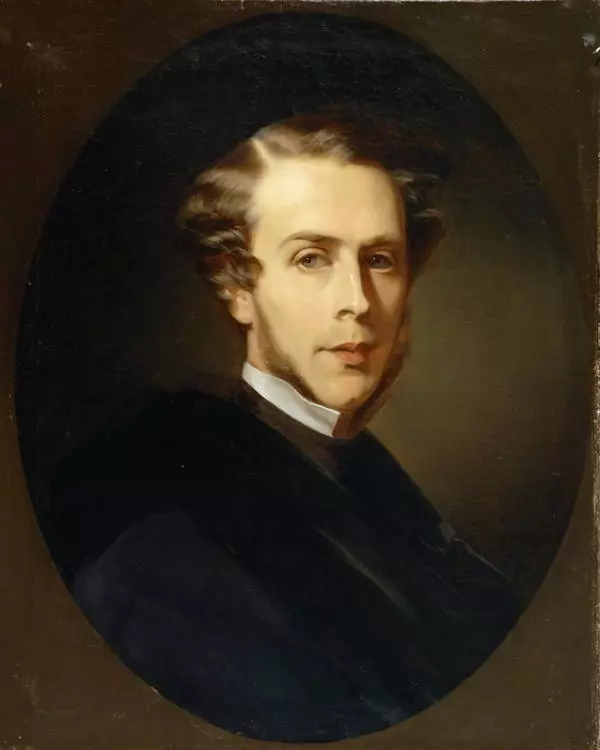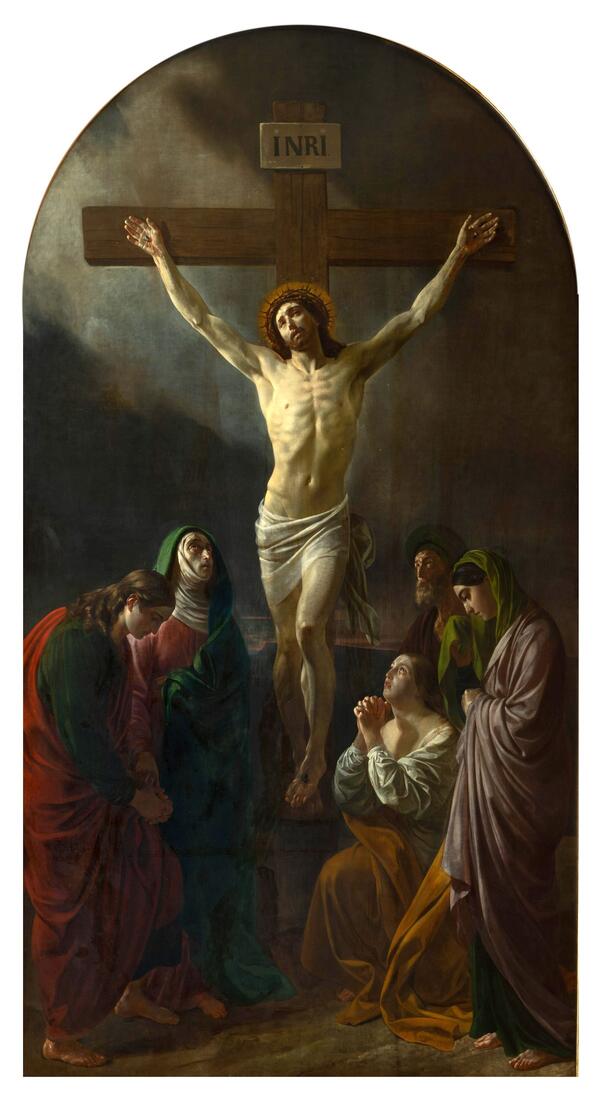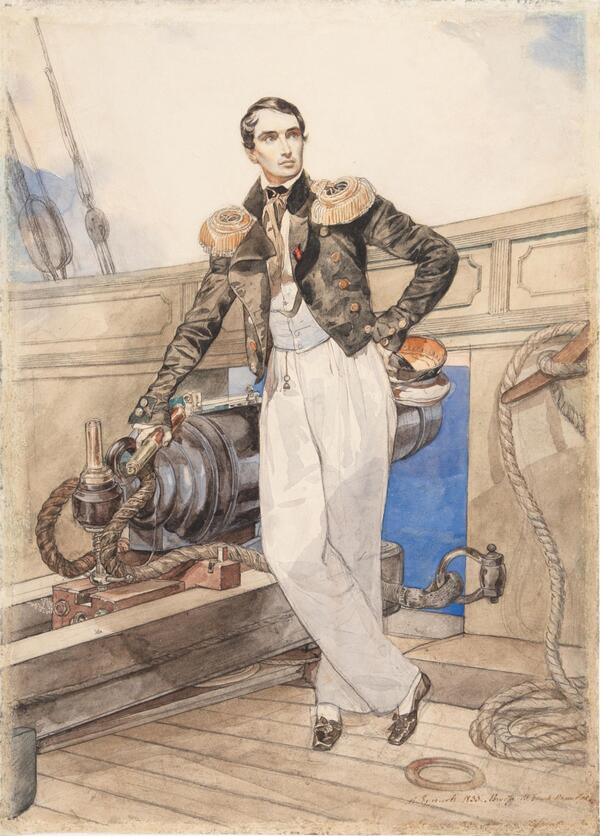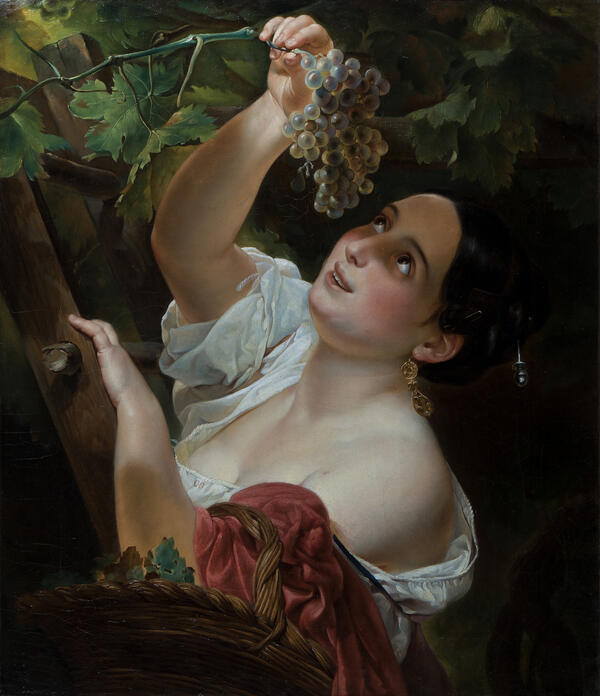Karl Bryullov, a graduate of the Academy of Arts, lived and worked in Italy for twelve years, from 1822. In the summer of 1827, the artist visited the excavation site of Pompeii. He was deeply impressed by the views and history of the city destroyed by the eruption of Mount Vesuvius. It was at that time that he contemplated doing a large multi-figure canvas painting, The Last Day of Pompeii.
1 / 3
The Last Day of Pompeii
Время создания
1833
Техника
Oil on canvas
Коллекция
Выставка
#7

Karl Bryullov
The Last Day of Pompeii
#9
#13
The subject of the painting is not typical of the historical painting of Classicism. Unfolding against the backdrop of the disaster are personal stories full of fear, despair, and love. Bryullov showed the calamity affecting the whole people, persons of different age and estate. All these are already features of a new trend, Romanticism.
Ashes are falling from the sky, buildings are tumbling down, but despite all this the characters are trying to help their family. We see a young family with kids, a mother covering her daughters. Two brothers are carrying their elderly father, a young man is carrying his fiancée. According to Nikolai Gogol, the canvas demonstrates ‘supreme, physical and moral, perfection’ of man.
#11
The artist’s intent was not just to paint a picture on a historical theme, he wanted to document a real event of the past. Bryullov carefully studied historical sources, including letters by a witness, writer Plinius Junior. Jugs, chairs, pieces of decoration, fragments of a chariot — all these are depictions of objects found during the excavation.
#12
Karl Bryullov. The Last Day of Pompeii. Oil on canvas.1833. Fragments of the painting
#14
The artist was as particular about depicting the place: “I took the scenery from life, neither detracting, nor adding anything”. The action is set at the Herculaneum Gate of Pompeii behind which Necropolis, Street of Tombs, began.
#15
From 79 A.D. to the beginning of the first excavation in 1748, Pompeii was buried under a layer of volcanic ashes. It “conserved” not only buildings and objects but also remains of humans. The figures of Bryullov’s composition are a replica of real postures of the Pompeiians who had not escaped the disaster.
The artist used his contemporaries to paint the characters’ faces from. The prototype of the man covering his family with a cloak was an Italian, Domenico Marini. The facial features of the artist’s favourite muse, Countess Yulia Samilova, can be seen in a few characters — the mother with two daughters, the woman who has fallen from the chariot, the woman with her family in the centre of the composition.
#16
In imitation of Renaissance masters, the artist put himself on the canvas as well. The character is holding a box with paint brushes on his head looking spellbound in the direction of the eruption. The girl with a jug on his right is either the known model Vittoria Caldoni or Countess Samoilova. She is the only one who is looking directly at the viewers.
#17
Over the six years that Bryullov worked at the picture he did a huge amount of work — dozens of sketches and studies from nature. He changed the characters' positions many times looking for an ideal composition. In 1833, The Last Day of Pompeii was exhibited in Rome to a lot of acclaim; the event was the talk of the town. The picture was awarded the gold medal in Paris.
Karl Bryullov. The Last Day of Pompeii. Sketch. Pen on paper. 1827–1828. The State Russian Museum
#19
In 1834, the painting was brought to St. Petersburg where it was also a tremendous success. Pushkin dedicated a poem to it and Gogol wrote a detailed article about it. The Last Day of Pompeii inspired many men of art and the Academy of Arts acknowledged it as the best painting of the 19th century.
Draft of Alexander Pushkin’s poem “Vesuvius jaws opened”. 1834. Source: ru.wikipedia.org.
#20
State Russian Museum
читать дальшескрыть
00:00
00:00
1x
The Last Day of Pompeii
Время создания
1833
Техника
Oil on canvas
Коллекция
Выставка
Открыть в приложении
Поделиться

